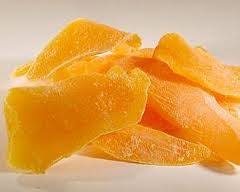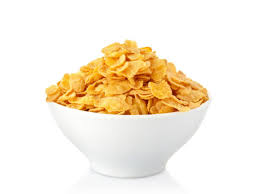Establishing A Mechanized Cocoa Plantation in Nigeria; The Feasibility Report.

Providing employment for a large section of the population, agriculture remains a major source of economic activity in Nigeria. Cocoa production is important to the economy of Nigeria. Cocoa is the leading agricultural export of the country and Nigeria is currently the world’s fourth largest producer of Cocoa, after Ivory Coast, Indonesia and Ghana, and the third largest exporter, after Ivory Coast and Ghana.
The crop was a major foreign exchange earner for Nigeria in the 1950s and 1960s and in 1970 the country was the second largest producer in the world but following investments in the oil sector in the 1970s and 1980s, Nigeria’s share of world output declined.
In 2010, Cocoa production accounted for only 0.3% of agricultural GDP. Average cocoa beans production in Nigeria between 2000 and 2010 was 389,272 tonnes per year rising from 170,000 tonnes produced in 1999.
Cocoa flourishes in areas that are not more than 20 degrees north or south of the equator. The trees respond well in regions with high temperature and distributed rainfall. In Nigeria, the cocoa tree is grown from seedlings which are raised in nurseries, when the seedlings reach a height of 3 cm they are transplanted at a distance of 3 to 4 meters. The cultivation of cocoa is done by many small-scale farmers on farmlands of around 2 hectares while export is dominated by a few firms.
Cocoa (Theobroma cacao L.) is a native of Amazon region of South America. The bulk of it is produced in the tropical areas of the African continent. There are over 20 species in the genus but the cocoa tree Theobroma cacao is the only one cultivated widely.
Cocoa is the second major non-oil foreign exchange earner in Nigeria after leather. It is produced in fourteen (14) states of the federation namely Ondo, Cross River, Oyo, Osun, Ekiti, Ogun, Edo, Kogi, Akwa Ibom, Delta, Abia, Kwara, Ebonyi and Rivers with an annual production rate of 240,000 metric tons.
Over 98% of the product is exported and it’s provides means of livelihood and employment to over five million (5,000,000) people.
In the year 2005 alone, export revenue from the sales of cocoa amounted to US $ 136.7 Million with Netherland, UK, France, Germany, Spain, Italy, USA and Japan being the major export destination. Other emerging markets include China and India.
Nigeria is third largest cocoa grower in Africa and producing about 400,000 MT of the commodity.
The company seeks to examine establish an eleven thousand (11,000) hectares cocoa plantation with ten thousand (10,000) hectares used for the cultivation of cocoa while one thousand (1,000) hectares is used for office and civil construction.
The plantation would start fruiting in the third year with an output of half (0.5) tons per hectare of dry cocoa seeds and production would increase to about one point five (1.5) tons per hectare of dry cocoa seeds in the sixth year.
A further increase to two (2) tons per hectare of dry cocoa seeds is expected from the tenth year while production is expected to start dropping by the thirtieth (30) year.
Plantain would also be cultivated on the farm to serve as cover for the cocoa seedling and earn capital for the farm before the cocoa tree starts yield. Earnings from plantain is however not accounted for in the financials.
Table of Contents
EXECUTIVE SUMMARY 1.0 Business Overview 1.1 Description of the Business 1.2 Vision and Mission Statement 1.3 Business Objective 1.4 Value Proposition 1.5 Critical Success Factor of the Business 1.6 Current Status of Business 1.7 Description of the Business Industry 1.8 Contribution to Local and National Economy 2.0 Agricultural Practice 2.1 Nursery Raising and Planting 2.2 Seedlings 2.3 Planting 2.4 Manures and Fertilizers 2.5 Weeding and Soil Cover 2.6 Pruning 2.7 Irrigation 2.8 Harvesting and Yield 2.9 Soil Type 2.10 Climate 2.11 Diseases and Pests 3. Marketing Plan 3.1 Description of product 3.2 Product Packaging and delivery 3.3 The Opportunity 3.4 Pricing Strategy 3.5 Target Market 3.6 Distribution and Delivery Strategy 3.7 Promotional Strategy 3.8 Competition 4. Production Plan 4.1 Description of the Location 4.2 Raw Materials 4.3 Production Equipment 4.4 Cultivation / Production Process 4.5 Production Cost 4.6 Stock Control Process 4.7 Pre-Operating activities and expenses 4.7.1 Operating Activities and Expenses 5.0 Organizational and Management Plan 5.1 Ownership of the business 5.2 Profile of the promoters 5.3 Key Management Staff 5.3.2 Management Support Units 5.4 Details of salary schedule 6. Financial Plan 6.1 Financial Assumption 6.2 Start – Up Capital Estimation 6.3 Source of Capital 6.4 Security of Loan 6.5 Loan Repayment Plan 6.6 Profit and Loss Analysis 6.7 Cash flow Analysis 6.8 Viability Analysis 7.0 Business Risk and mitigation factor 7.1 Business Risks 7.2 SWOT Analysis
Project Specification:
Additional Info
Get this Report
Direct bank transfer
To order the report, Please do pay the sum of ₦150,000 into
Account Name : Foraminifera Market Research Ltd
Account Number : 274 20 569 37
Account Name : Foraminifera Market Research Ltd
Account Number : 101 76 603 95
Account Name : Foraminifera Ventures
Account Number : 011 66 066 32
Make your payment directly into our bank account. Please use your Order ID as the payment reference. Your order will not be shipped until the funds have cleared in our account.
Instructions
After payment call us on 01 -29 52 413 / 08033782777 or email us at foraminiferamarketresearch@yahoo.com with the payment details. After payment confirmation, the soft copy of the report would be sent to you within 24 hours.



